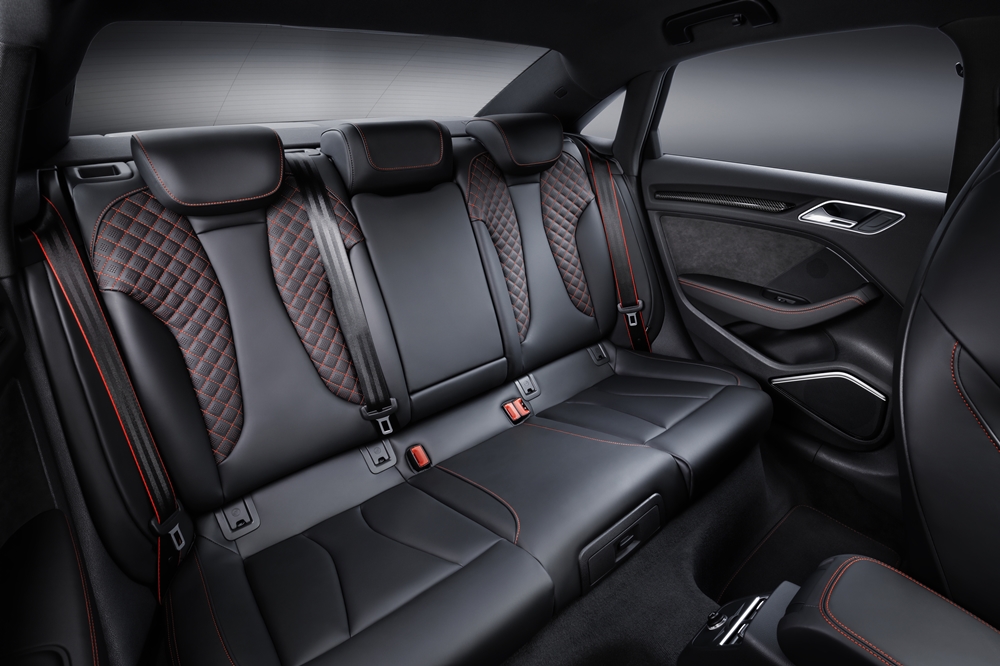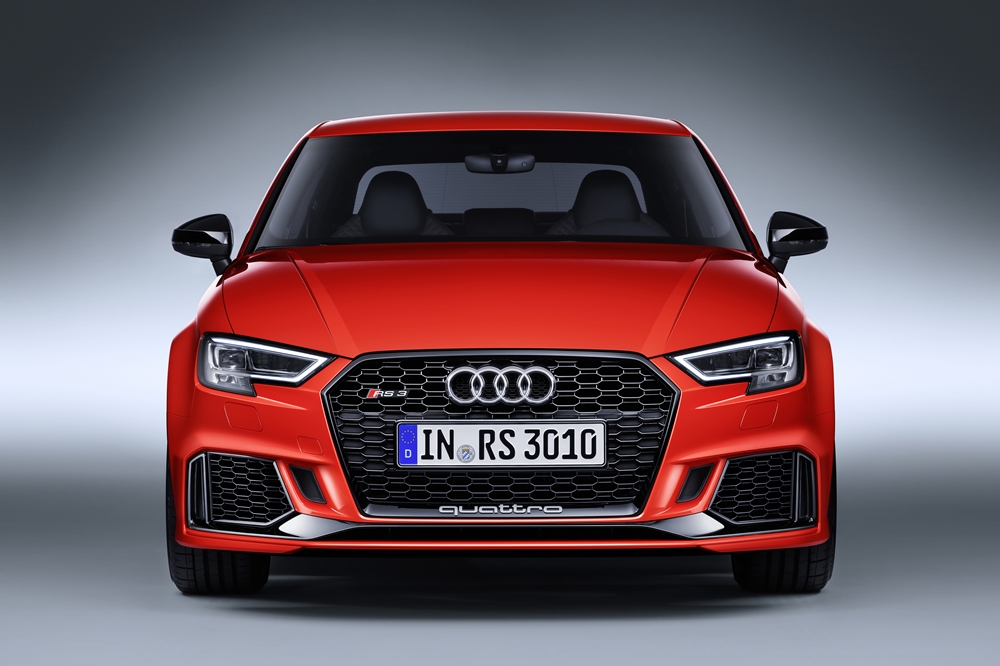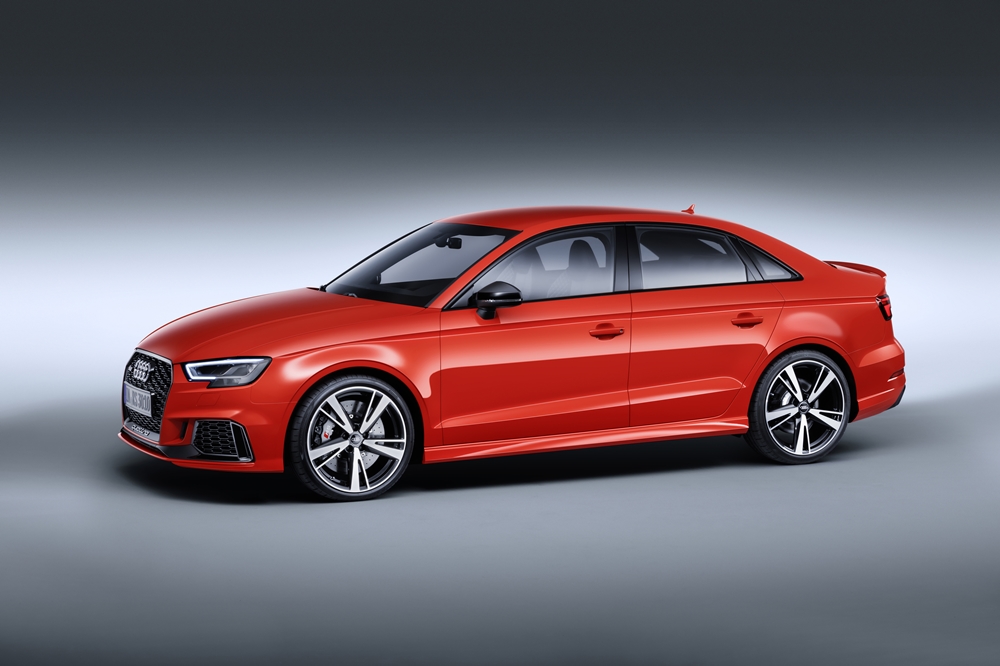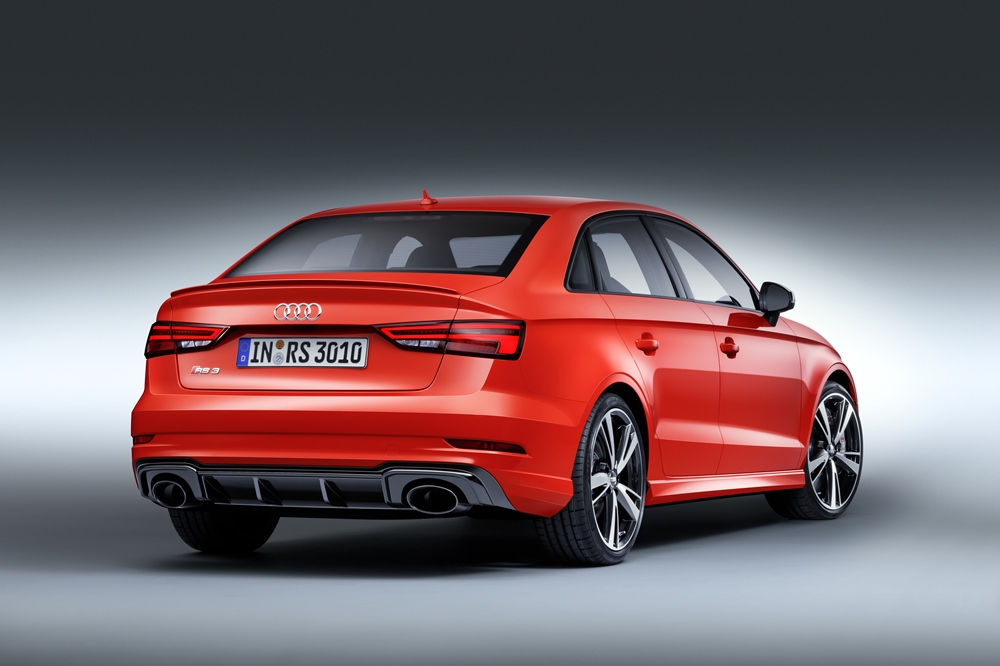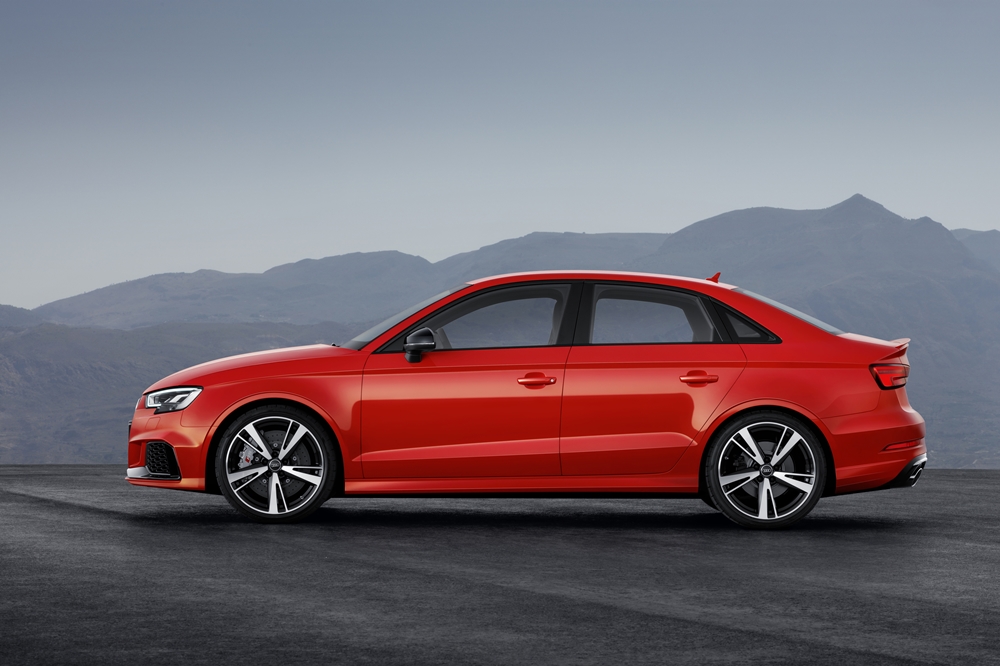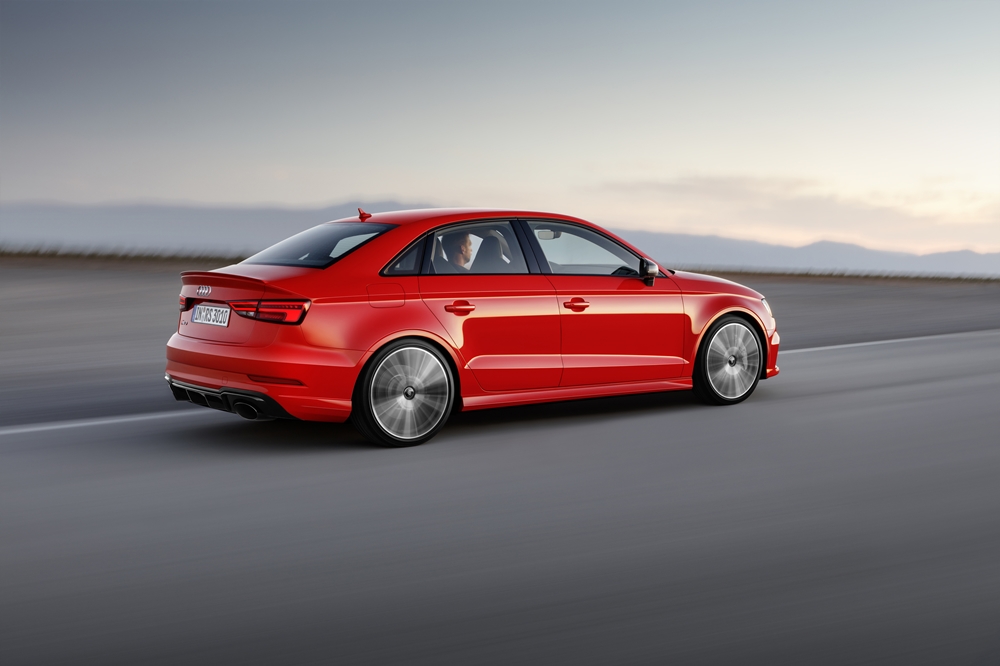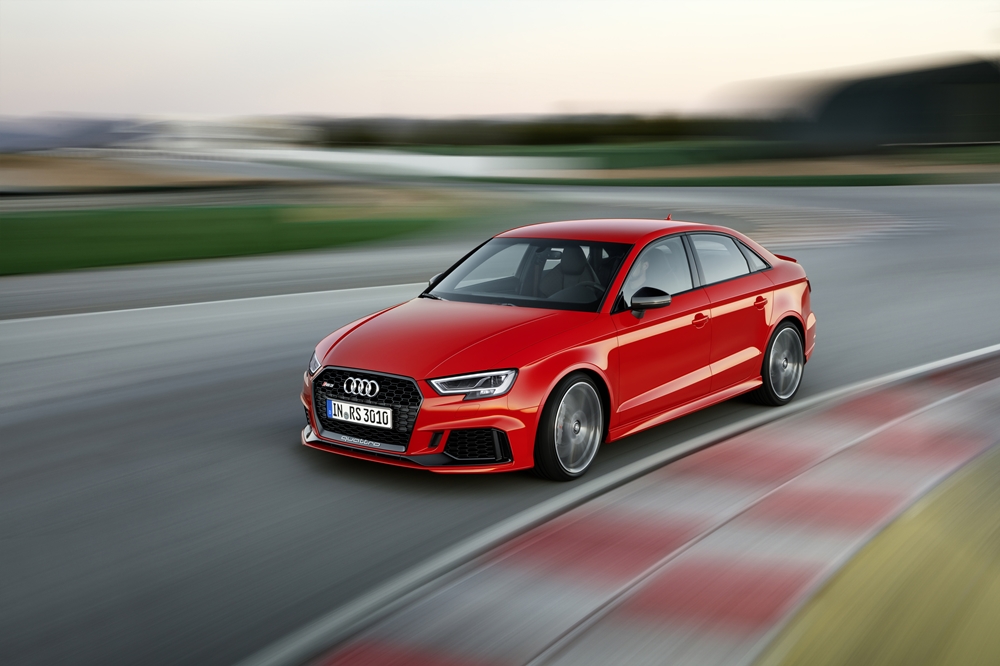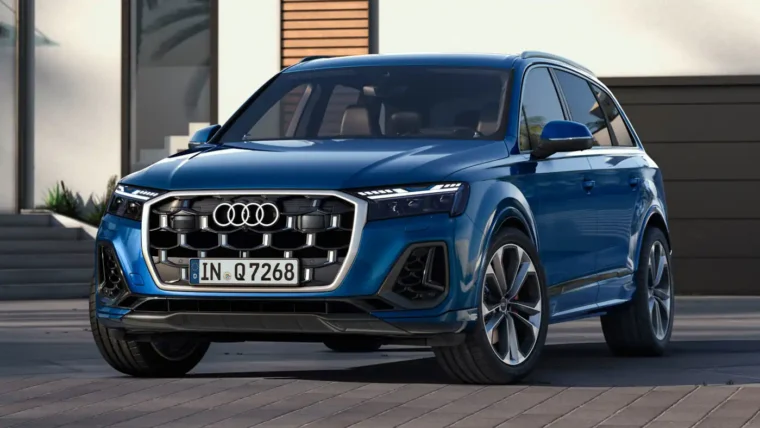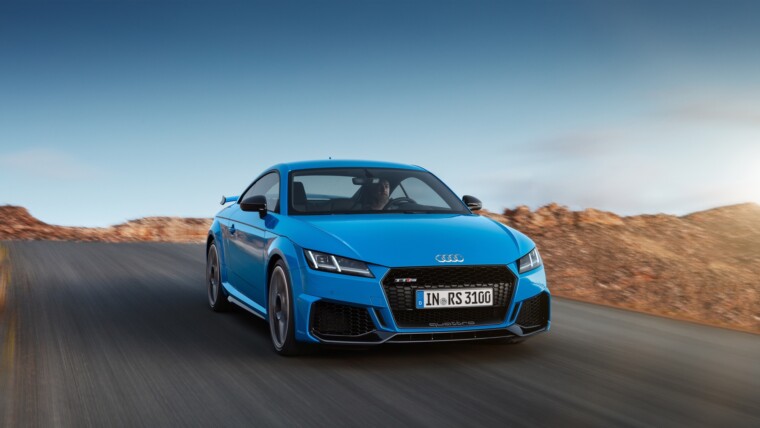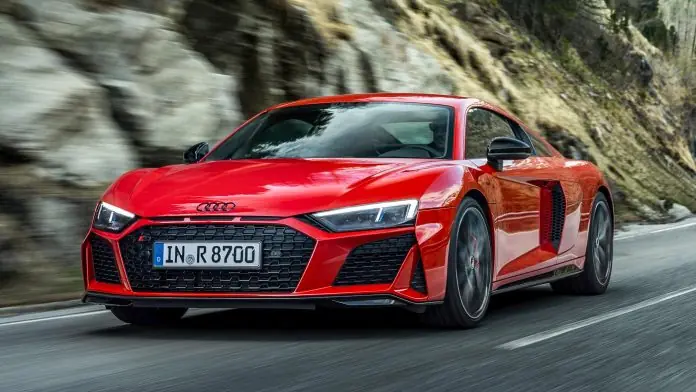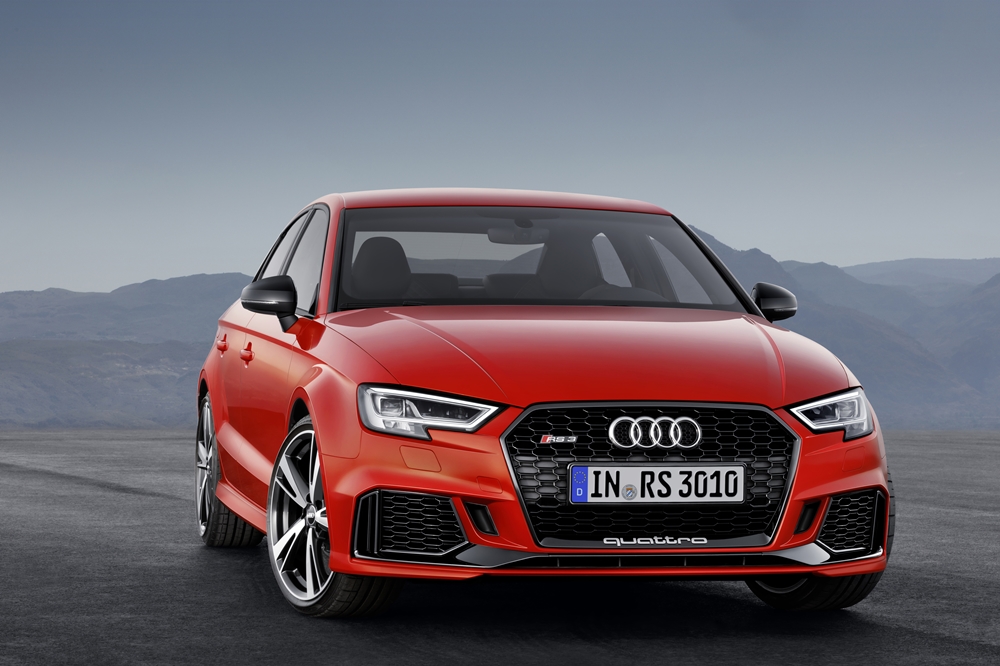
At this year’s Paris Motor Show, Audi has unveiled the first A3 sedan to bear the RS label with a 400hp 5-cylinder engine, groundbreaking efficiency and an even sharper look.
The new 2.5 TFSI in the RS3 sedan outputs 400 hp and 480 Nm of torque at engine speeds between 1,700 and 5,850 rpm, making it the most powerful 5-cylinder engine on the world market. The power of the 2.5 TFSI is sent to all four wheels via an S tronic 7-speed dual clutch transmission. As a result, the power-packed compact RS model is now capable of sprinting from 0 to 100 km/h in just 4.1 seconds up to a maximum electronically limited top speed of 250 km/h. Upon request, Audi can increase the top speed up to 280 km/h.
The 5-cylinder engine is 26kg lighter than its predecessor and now employs a dual injection into the intake manifold and into the combustion chambers, as well as the Audi valvelift system for variable control of the exhaust valves resulting in optimal power development at a reduced consumption level.
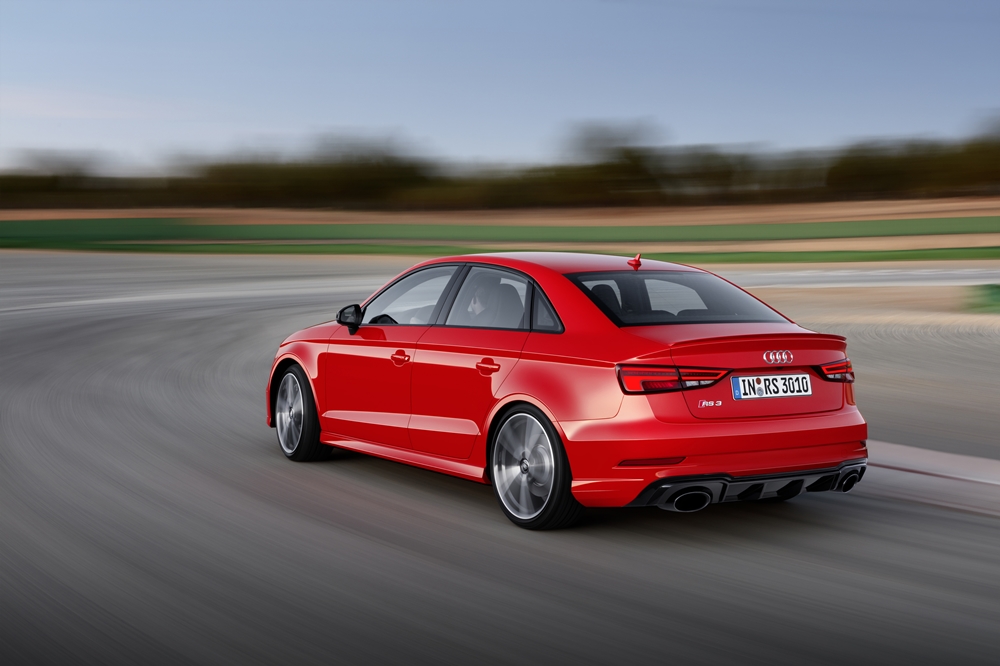
All-wheel-drive Quattro management is integrated as a standard feature in the Audi drive select dynamic handling system, as are the steering, S tronic, engine management and the adjustable exhaust flaps. The driver can individually vary the operation of these components between the 3 modes – comfort, auto and dynamic. The same thing goes for the optional RS sport suspension plus with adaptive damper control.
Wheel-selective torque control, an intelligent software feature of the Electronic Stabilization Control (ESC), rounds off the work of the all-wheel drive. In fast cornering it slightly brakes the inside wheels, which are under a reduced load. In this way it can transmit greater lateral power, making handling more fluid and stable. In addition, the RS-specifically tuned ESC comes with a sport mode for controlled drifting, and can be fully deactivated for sporty driving characteristics.
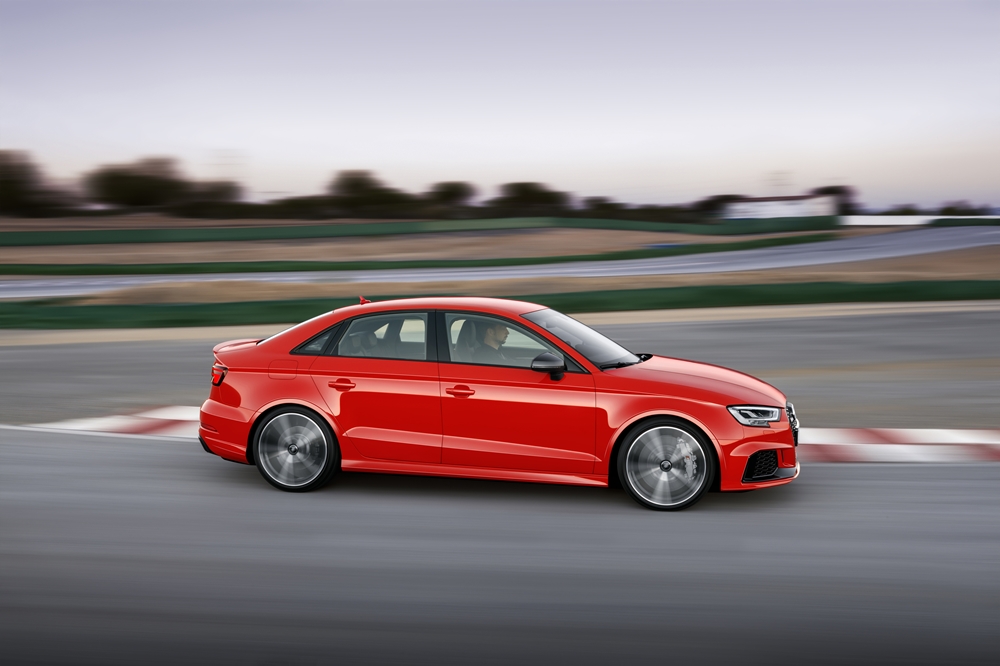
In terms of looks, the RS 3 Sedan expresses its sporty character visually with the Singleframe with its three-dimensional honeycomb grille bearing the quattro logo along the bottom. Underneath, a blade extends across the entire width of the front into the side air inlets, where it forms narrow funnels for better air flow through the wheel arches.
LED headlights with their distinctive daytime running light signature are standard; Audi also offers matrix LED headlights as an option. Compared with a standard A3, the front track of the RS 3 sedan is wider by 20 mm – the front wheel arches are accordingly wider flared as well. At the rear axle the wheels are spaced 14 mm further apart compared with the basic model. A fixed spoiler lip on the luggage compartment lid improves the separation of air flow. A distinctive diffusor insert with vertical struts and the large oval tailpipes of the RS exhaust system terminate the rear. Audi exclusively offers the RS-specific paint colours Nardo gray and Catalunya red (picture below) as options.
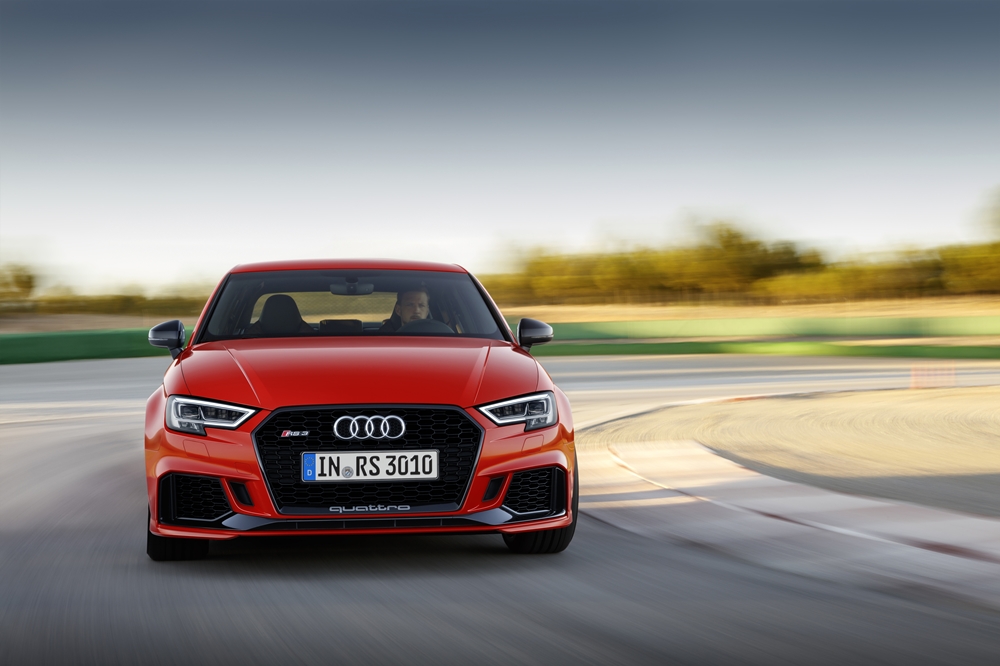
The dark-toned interior welcomes the driver and passengers with illuminated door sills bearing the RS 3 logos as a standard feature. Black fine Nappa leather sport seats with RS logos on the backrests are standard, but optionally available are more contoured RS sport seats with integrated head restraints, which feature diamond patterned and color-perforated covers. The RS sport leather steering wheel is flattened at the bottom, with inlays at the instrument panel and at the doors.
The flat hierarchies and intelligently linked context menus make operation of the Audi RS 3 sedan intuitive and ergonomic. The main control element is the rotary/push-button control on the console of the center tunnel. With the top infotainment system MMI navigation plus with MMI touch, the terminal includes a touchpad for scrolling, zooming and writing. Additionally included is a free text search feature that automatically completes the user’s input after entering just a few letters. The voice control processes questions and commands formulated in ordinary language.
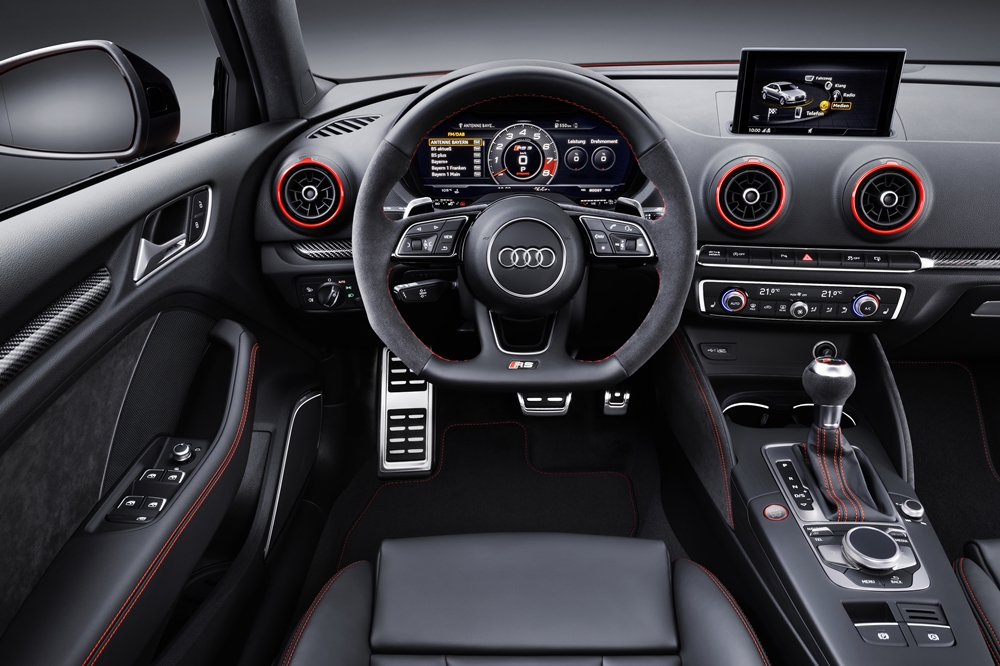
Standard is an electrically extending MMI screen with a 7-inch diagonal. The two circular instrument dials are black with red needles and white scales. The centrally positioned driver information system includes a boost pressure indicator, an oil thermometer and a lap timer. The fully digital Audi virtual cockpit is optionally available. On its high-resolution 12.3-inch monitor the driver can choose between three display modes. They include a special RS screen that moves the tachometer to the center. On the left and right information appears on tyre pressure, torque and g- forces. When the transmission is operating in manual mode, a scale with a colour background prompts the driver to use the steering wheel paddle or selector lever to upshift when approaching maximum revs.
The Audi RS 3 sedan can go online with an LTE module that brings on board the various services of Audi connect, including navigation with Google Earth and Google Street View, as well as information on fuel prices, the weather, travel and traffic. The information is displayed directly in the MMI, and operation is by way of the standard-equipped RS multifunction steering wheel, the rotary/push-button control and touchpad or by spoken command. Data is transmitted via the new Audi connect SIM, which is factory-installed in the car.
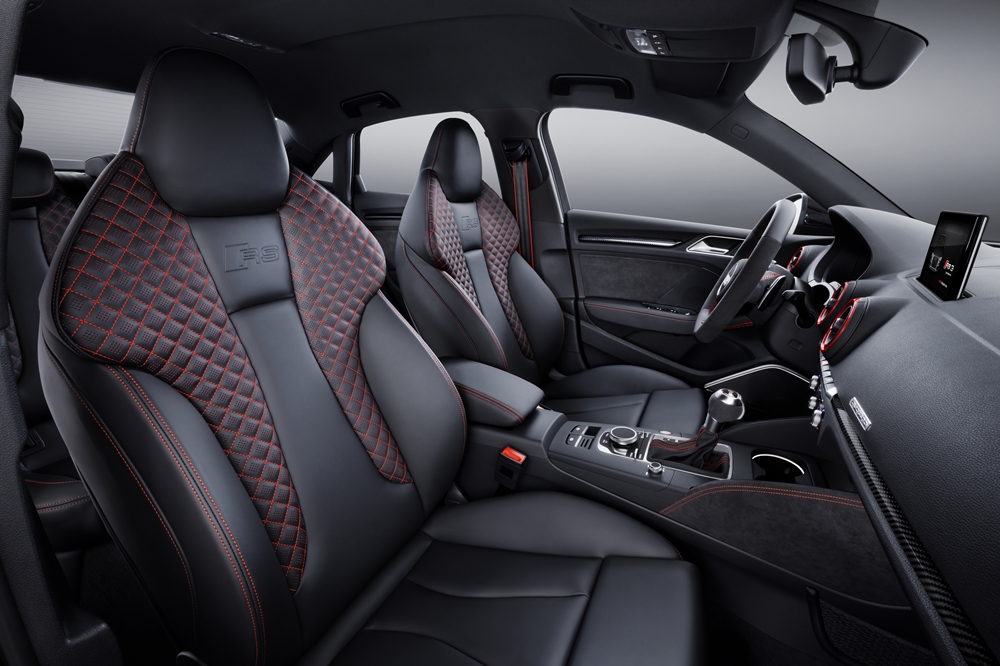
Attractive supplementary components complete the infotainment line. For instance, the Audi phone box inductively charges the smartphone according to the Qi standard and connects it to the car antenna via near-field coupling for optimal reception quality. The Bang & Olufsen Sound System produces an excellent sound experience with 705 watts of power and 14 speakers.
The RS 3 sedan is also the top of its class when it comes to driver assistance systems. They keep the car at the desired distance from the vehicle in front, assist the driver when changing lanes and staying within the given lane, detect traffic signs and help avoid rear-end collisions and pedestrian accidents. New are the traffic jam assist, which briefly takes over the steering in slow-moving traffic up to 65 km/h, the emergency assist, which automatically stops the car if required, and cross traffic assist rear. The latter system looks out for crossing vehicles when pulling out of a parking space.

Interior 
Static photo Colour: Catalunya Red 
Static photo Colour: Catalunya Red 
Static photo Colour: Catalunya Red 
Static photo Colour: Catalunya Red 
Static photo Colour: Catalunya Red 

Static photo Colour: Catalunya Red 
Static photo Colour: Catalunya Red 

Static photo Colour: Catalunya Red 
Dynamic photo Colour: Catalunya Red 
Dynamic photo Colour: Catalunya Red 
Dynamic photo Colour: Catalunya Red 
Dynamic photo Colour: Catalunya Red 
Dynamic photo Colour: Catalunya Red 
Cockpit 
Interior
Other posts by AF Newsdesk


